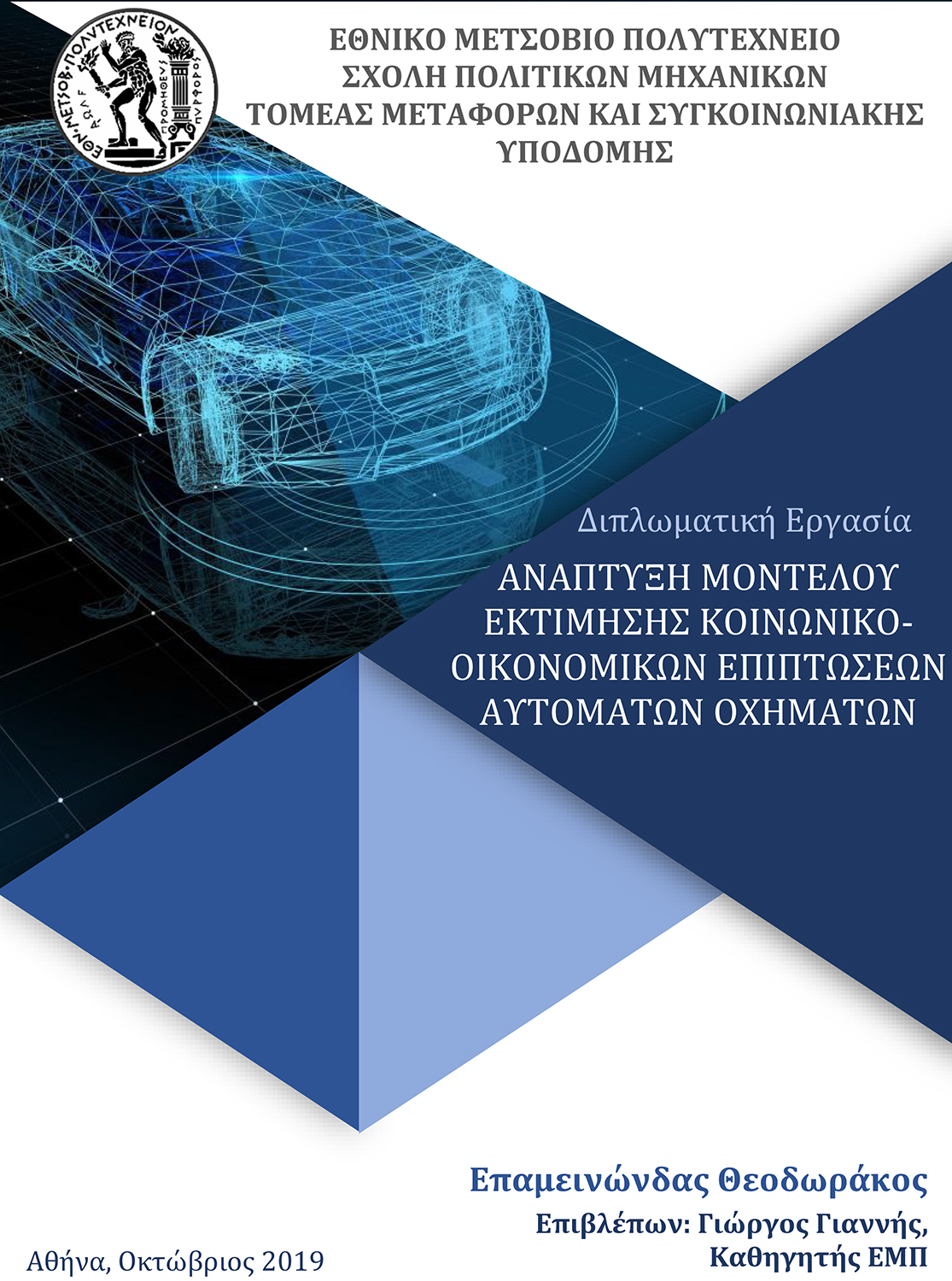
The purpose of this thesis was the development of a model that, by filling in the values for some parameters, could estimate the socio-economic impact of the automated vehicles’ penetration in the road network for different import scenarios, compare these scenarios’ results and show each parameters’ influence on the final cost. The basic parameters included in the model are the penetration scenarios of the automated vehicles, the number of vehicle-kilometers, the fuel required, the environmental pollutants produced, the road accidents, the travel time, the cost of constructing and maintaining the infrastructure, the purchasing cost of the vehicles as well as their insurance costs. The model was developed studying the international literature and taking into account plenty of existing research, studies and assessments. Afterwards, using this model a comparison was held between three penetration scenarios (pessimistic, intermediate and optimistic) and the zero one (zero penetration rate of automated vehicles). All scenarios and parameters were customised for the United Kingdom and the time period 2020 – 2050. The results of its use highlighted the crucial benefits of automated vehicles’ import into the road network. However, the parameters’ influence differs depending on the penetration scenario and the reference year, with most important the cost of travel time.
| ID | ad92 |
| Presentation | |
| Full Text | |
| Tags | automation, impact assessment, statistical modelling, traffic automation |













